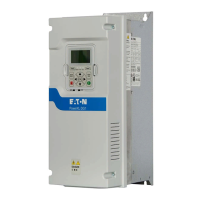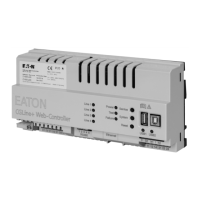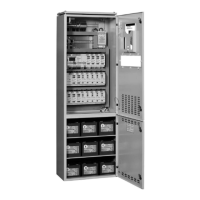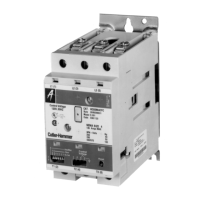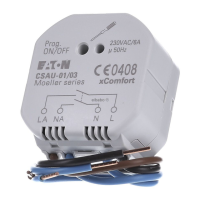Form 6 triple-single microprocessor-based rack mount recloser control
9INSTALLATION AND OPERATION INSTRUCTIONS MN280084EN July 2018
WARNING
Hazardous voltage. Do not rely on the open position of
the yellow operating handle; it does not ensure that the
line has been de-energized. Always establish a visible
disconnect. Failure to follow proper safety practices can
result in contact with high voltage, which will cause
death or severe personal injury. G116.0
IMPORTANT
Pushing the yellow operating handle to the CLOSE
position
will not
close the recloser. All close operations
are initiated by the Form 6 Triple-Single control.
Three-Phase Trip – Three-Phase Lockout (ganged)
or
Single-Phase Trip – Three-Phase Lockout
If the control is in Three-Phase Trip – Three-Phase Lockout
(ganged) mode or Single-Phase Trip – Three-Phase Lockout
mode, all three phases are permanently selected and the
A PHASE SELECT, B PHASE SELECT, and C PHASE SELECT
LEDs are illuminated.
When one phase is opened with the yellow operating
handle, all three phases open and lockout. The RECLOSER
OPEN and CONTROL LOCKOUT indicator LEDs illuminate
on the control panel.
With the yellow operating handle of the appropriate phase
in the CLOSE position, press the CLOSE pushbutton on
the control operator panel. All three phases close and the
RECLOSER CLOSED LED illuminates.
Single-Phase Trip – Single-Phase Lockout
When in Single-Phase Trip – Single-Phase Lockout mode any
combination of phases can be selected and the respective
PHASE SELECT LED illuminates. Each selected phase must
be closed individually.
When the selected phase is opened with the yellow
operating handle, only that phase opens and locks out. The
RECLOSER OPEN, RECLOSER CLOSED, and CONTROL
LOCKOUT indicator LEDs blink on the control panel.
The default text message on the LCD displays the mode of
the triple-single configuration and the status of each phase.
With the yellow operating handle of the selected phase
in the CLOSE position, press the CLOSE pushbutton on
the control panel. The phase closes and the RECLOSER
CLOSED LED illuminates.
ote:N Refer to Single-Phase Trip/Single-Phase Lockout
Mode Hot Line Tag Behavior Information section
for specific ProView 4.0.1 version and below
recommendation.
IMPORTANT
If the power save feature is enabled (default), and more
than ten minutes elapses since the last panel operation,
all the LEDs, except HOT LINE TAG (if active), will turn off.
Verify the phase or phases you want activated are
selected prior to pressing the TRIP or CLOSE button.
Single-Phase Trip/Single-Phase Lockout Mode Hot Line
Tag Behavior Information
Applies only to ProView 4.0.1 version software and below.
WARNING
Hazardous voltage. When Hot Line Tag is enabled in the
single-phase trip/single-phase lockout mode and the
overcurrent element times out first, only the faulted
phase(s) will open. The non-faulted phase(s) will remain
closed and Hot Line Tag will only prevent a reclose/close
of the opened phase(s).
When in single-phase trip/single-phase lockout mode,
set the Hot Line Tag response time to be faster than
the overcurrent response time to ensure all faulted and
non-faulted phases open.
Failure to do so may result in death, severe personal
injury, and equipment damage. T373.1
With Hot Line Tag enabled in the single-phase trip/single-
phase lockout mode and the overcurrent element times
out, only the faulted phase(s) will open and the non-faulted
phase(s) will remain closed. Hot Line Tag will only prevent a
reclose/close of the opened phase(s).
OPTION #1, OPTION #2, AND OPTION #3
The OPTION #1, OPTION #2, and OPTION #3 function keys
must be programmed via the ProView Idea Workbench
software. These options do not have active default values.
The OPTION LEDs are illuminated when the options
configured via the Idea Workbench are selected.
Refer to Service Information S280-70-9 Form 6-TS Control
Programming Guide for additional information.
These OPTION keys provide a momentary signal. For
instance, these keys can be programmed to toggle control
status, protective functions, or a momentary input pulse.

